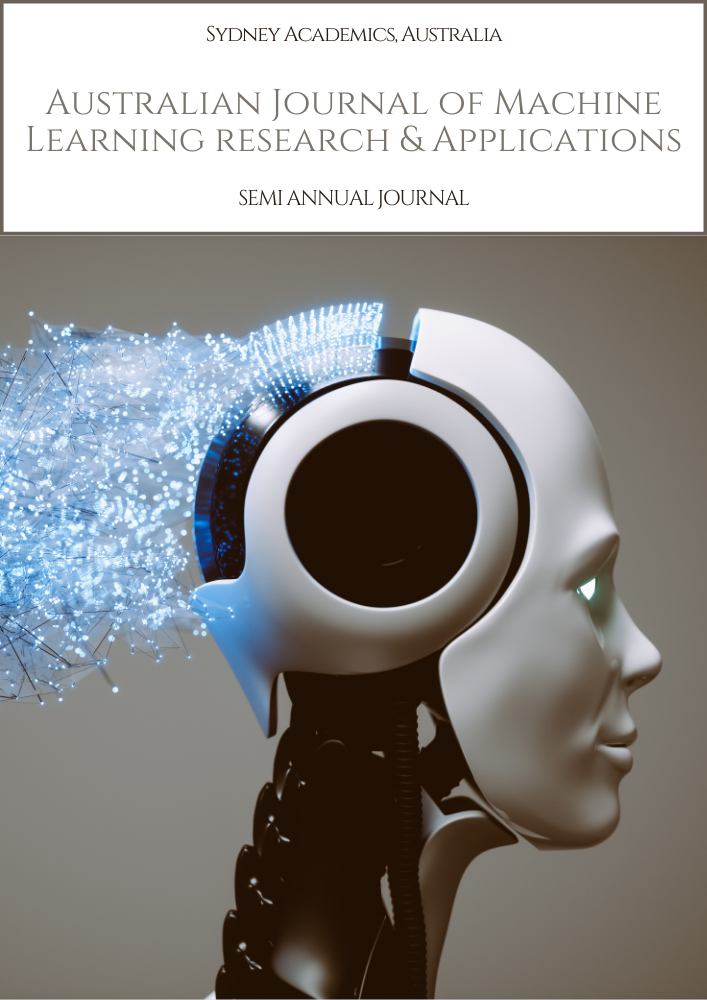Deep Reinforcement Learning for Automated Cyber Threat Hunting
A Next-Gen Solution
Keywords:
Deep Reinforcement Learning, Cyber Threat Hunting, Anomaly Detection, Decision-Making, Threat MitigationAbstract
In the face of increasingly sophisticated cyber threats, organizations are compelled to adopt advanced methodologies for cyber threat hunting. This paper proposes the utilization of Deep Reinforcement Learning (DRL) to automate the process of cyber threat hunting, focusing on real-time anomaly detection, effective decision-making, and efficient threat mitigation within enterprise systems. The integration of DRL into cybersecurity operations represents a paradigm shift from traditional approaches that often rely on static rule-based systems or signature-based detection methods. The proposed framework harnesses the adaptive learning capabilities of DRL algorithms, allowing for continuous improvement in threat detection and response strategies. By simulating various cyber threat scenarios, this research explores the effectiveness of DRL in identifying anomalies and initiating preemptive measures against potential attacks. The findings indicate that a DRL-based approach not only enhances the accuracy of threat detection but also significantly reduces response times, thereby improving overall cybersecurity posture. The implications of this research extend to various sectors, emphasizing the need for organizations to adopt automated solutions to remain resilient against evolving cyber threats.
Downloads
References
Vangoor, Vinay Kumar Reddy, et al. "Zero Trust Architecture: Implementing Microsegmentation in Enterprise Networks." Journal of Artificial Intelligence Research and Applications 4.1 (2024): 512-538.
Gayam, Swaroop Reddy. "Artificial Intelligence in E-Commerce: Advanced Techniques for Personalized Recommendations, Customer Segmentation, and Dynamic Pricing." Journal of Bioinformatics and Artificial Intelligence 1.1 (2021): 105-150.
Nimmagadda, Venkata Siva Prakash. "Artificial Intelligence for Predictive Maintenance of Banking IT Infrastructure: Advanced Techniques, Applications, and Real-World Case Studies." Journal of Deep Learning in Genomic Data Analysis 2.1 (2022): 86-122.
Putha, Sudharshan. "AI-Driven Predictive Analytics for Maintenance and Reliability Engineering in Manufacturing." Journal of AI in Healthcare and Medicine 2.1 (2022): 383-417.
Sahu, Mohit Kumar. "Machine Learning for Personalized Marketing and Customer Engagement in Retail: Techniques, Models, and Real-World Applications." Journal of Artificial Intelligence Research and Applications 2.1 (2022): 219-254.
Kasaraneni, Bhavani Prasad. "AI-Driven Policy Administration in Life Insurance: Enhancing Efficiency, Accuracy, and Customer Experience." Journal of Artificial Intelligence Research and Applications 1.1 (2021): 407-458.
Kondapaka, Krishna Kanth. "AI-Driven Demand Sensing and Response Strategies in Retail Supply Chains: Advanced Models, Techniques, and Real-World Applications." Journal of Artificial Intelligence Research and Applications 1.1 (2021): 459-487.
Kasaraneni, Ramana Kumar. "AI-Enhanced Process Optimization in Manufacturing: Leveraging Data Analytics for Continuous Improvement." Journal of Artificial Intelligence Research and Applications 1.1 (2021): 488-530.
Pattyam, Sandeep Pushyamitra. "AI-Enhanced Natural Language Processing: Techniques for Automated Text Analysis, Sentiment Detection, and Conversational Agents." Journal of Artificial Intelligence Research and Applications 1.1 (2021): 371-406.
Kuna, Siva Sarana. "The Role of Natural Language Processing in Enhancing Insurance Document Processing." Journal of Bioinformatics and Artificial Intelligence 3.1 (2023): 289-335.
George, Jabin Geevarghese, et al. "AI-Driven Sentiment Analysis for Enhanced Predictive Maintenance and Customer Insights in Enterprise Systems." Nanotechnology Perceptions (2024): 1018-1034.
P. Katari, V. Rama Raju Alluri, A. K. P. Venkata, L. Gudala, and S. Ganesh Reddy, “Quantum-Resistant Cryptography: Practical Implementations for Post-Quantum Security”, Asian J. Multi. Res. Rev., vol. 1, no. 2, pp. 283–307, Dec. 2020
Karunakaran, Arun Rasika. "Maximizing Efficiency: Leveraging AI for Macro Space Optimization in Various Grocery Retail Formats." Journal of AI-Assisted Scientific Discovery 2.2 (2022): 151-188.
Sengottaiyan, Krishnamoorthy, and Manojdeep Singh Jasrotia. "Relocation of Manufacturing Lines-A Structured Approach for Success." International Journal of Science and Research (IJSR) 13.6 (2024): 1176-1181.
Paul, Debasish, Gunaseelan Namperumal, and Yeswanth Surampudi. "Optimizing LLM Training for Financial Services: Best Practices for Model Accuracy, Risk Management, and Compliance in AI-Powered Financial Applications." Journal of Artificial Intelligence Research and Applications 3.2 (2023): 550-588.
Namperumal, Gunaseelan, Akila Selvaraj, and Yeswanth Surampudi. "Synthetic Data Generation for Credit Scoring Models: Leveraging AI and Machine Learning to Improve Predictive Accuracy and Reduce Bias in Financial Services." Journal of Artificial Intelligence Research 2.1 (2022): 168-204.
Soundarapandiyan, Rajalakshmi, Praveen Sivathapandi, and Yeswanth Surampudi. "Enhancing Algorithmic Trading Strategies with Synthetic Market Data: AI/ML Approaches for Simulating High-Frequency Trading Environments." Journal of Artificial Intelligence Research and Applications 2.1 (2022): 333-373.
Pradeep Manivannan, Amsa Selvaraj, and Jim Todd Sunder Singh. “Strategic Development of Innovative MarTech Roadmaps for Enhanced System Capabilities and Dependency Reduction”. Journal of Science & Technology, vol. 3, no. 3, May 2022, pp. 243-85
Yellepeddi, Sai Manoj, et al. "Federated Learning for Collaborative Threat Intelligence Sharing: A Practical Approach." Distributed Learning and Broad Applications in Scientific Research 5 (2019): 146-167.


